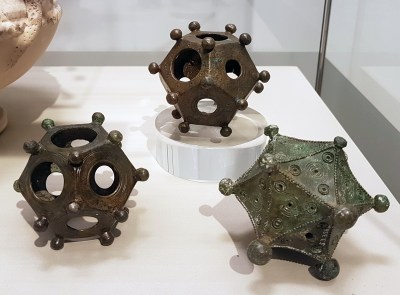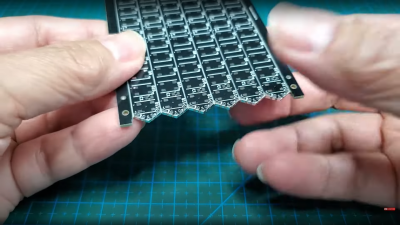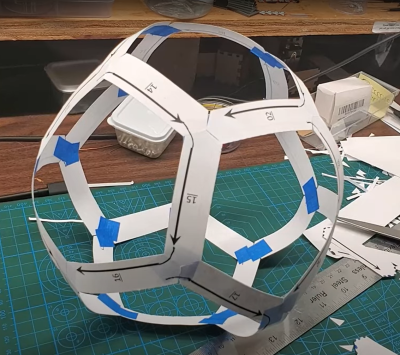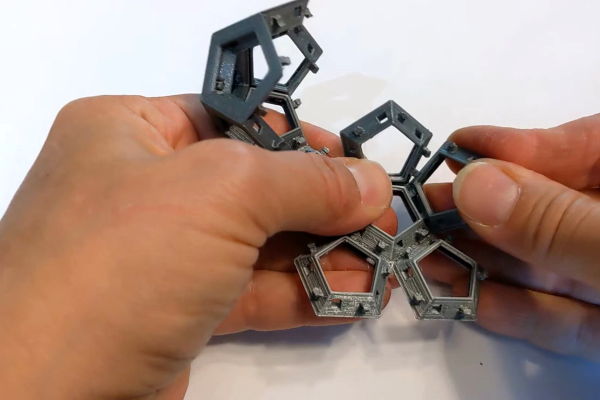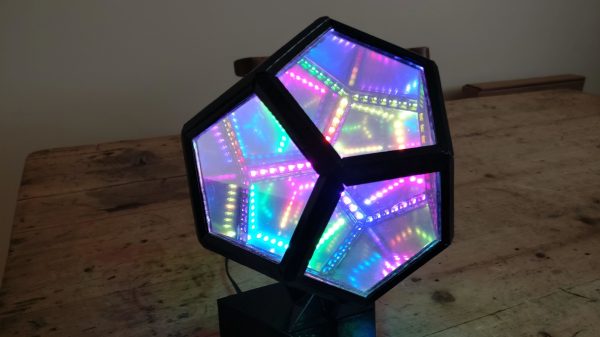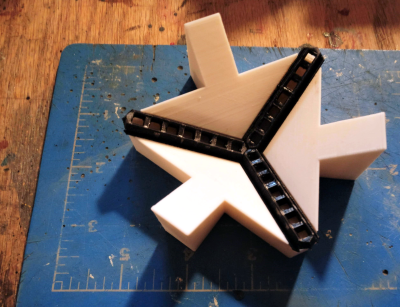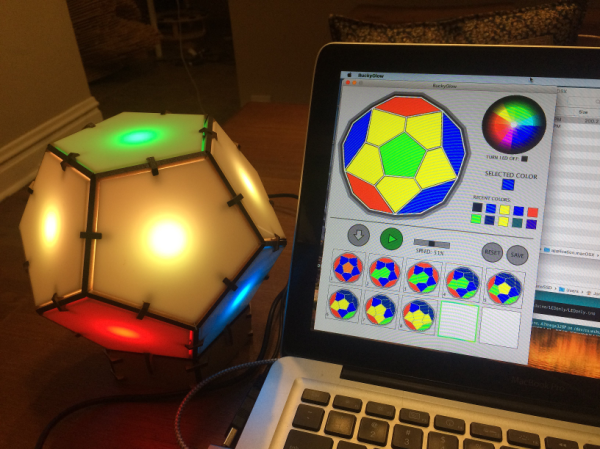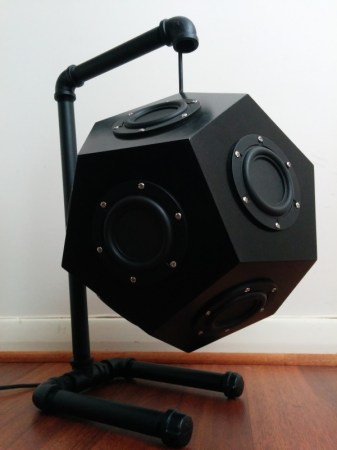Over the years archaeological digs of Roman sites have uncovered many of these strange dodecahedrons, usually made out of metal and with various holes in their faces. With no surviving records that describe how they were used, speculation has ranged from jewelry to a knitting aid. In a 2023 video by [Amy Gaines] it is this latter use which is explored, using a 3D printed dodecahedron and some wooden dowels to knit both gold wire and yarn into rather intricate patterns that are also referred to as ‘Viking Knitting’.
As we mentioned previously when yet another one of these dodecahedrons was uncovered, their use was unlikely to be of supreme relevance in military or scientific circles on account of a lack of evidence. What is quite possible is that these were both attractive shapes for jewelry (beads), and useful knitting aids for both jewelry makers (for e.g. gold wire braiding) and quite possibly yarn-related uses. The results which [Amy] demonstrates in the video for the gold wire in particular bear a striking resemblance to ancient braided gold chains on display at the Met and other museums, which leads credence to this theory.
If these items were effectively just common knitting tools, that would explain why the historical record is mum on them, as they would have been as notable as a hammer or a precision lathe used by the ancient Greeks.
Thanks to [john] for the tip.
Continue reading “The Mysterious Roman Dodecahedron Was Possibly Just For Knitting”



